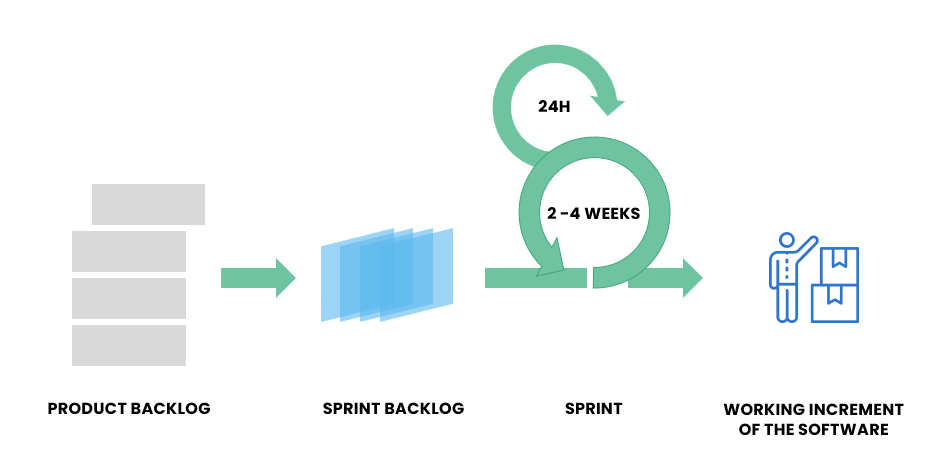A Guide to Scrum Sprints
In the realm of Agile project management, Scrum has emerged as a leading methodology for delivering results with speed, adaptability, and efficiency. In this article we discuss everything about Scrum Sprints.
Scrum Roles
Agile scrum has 3 main roles: the product owner, the development team ( including BAs, QAs and anyone working on the project ) as well as scrum master. These are the core roles to execute in the sprint. Havig the right roles on the scrum team is critical to project success.
 Understanding Scrum Sprints
Understanding Scrum Sprints
Scrum Sprints are the heartbeat of Agile development. In essence, they are time-boxed iterations, typically lasting two to four weeks, where cross-functional teams collaborate intensively to deliver a potentially shippable product increment. The key to successful Sprints lies in meticulous planning, execution, and continuous improvement.
Sprint Planning: A Deep Dive
The foundation of every successful Sprint lies in its planning phase. During this crucial step, the Scrum Team defines the Sprint goal, selects user stories from the product backlog, and breaks them down into manageable tasks. Find out more in our article on sprint ceremonies.
Sprint Execution: The Art of Collaboration
The execution phase of a Sprint is where the magic happens. Cross-functional teams come together to develop, test, and integrate the user stories into a potentially shippable product increment. Daily Stand-up Meetings, or Daily Scrum, facilitate clear communication and ensure that the team stays on track.
 Daily Scrum: Keeping the Pulse
Daily Scrum: Keeping the Pulse
Daily Scrum meetings are the heartbeat of a Sprint. They provide a platform for team members to discuss progress, challenges, and plans.
Sprint Review and Retrospective: Continuous Improvement
At the end of each Sprint, a review and retrospective are conducted to assess what went well and what could be improved. This feedback loop is instrumental in refining the team’s processes and enhancing overall efficiency.
Sprint Review: Showcasing Progress
The Sprint Review is an opportunity to showcase the product increment to stakeholders and gather their feedback. It plays a pivotal role in aligning the team’s work with customer expectations.
 Sprint Retrospective: The Path to Excellence
Sprint Retrospective: The Path to Excellence
The Sprint Retrospective is where the team reflects on their performance and identifies areas for improvement. This continuous improvement process ensures that each Sprint is more efficient and effective than the last.
Key Benefits of Scrum Sprints
Scrum Sprints offer several key benefits that make them a favored choice in Agile development:
- Faster Time-to-Market: Sprints enable rapid development and frequent releases, ensuring that valuable features reach customers sooner.
- Enhanced Collaboration: Cross-functional teams collaborate closely, fostering creativity and innovation.
- Adaptability: Sprints allow teams to respond quickly to changing requirements or market dynamics.
- Transparency: Daily Scrum meetings and Sprint Reviews keep stakeholders informed and engaged throughout the project.
- Continuous Improvement: The Sprint Retrospective drives a culture of continuous improvement, leading to higher quality and efficiency.
Conclusion
In this article, we’ve explored everything about Scrum Sprints, from planning to execution and highlighted their numerous advantages in Agile development. By mastering Scrum Sprints, you position your team for success in delivering high-quality products efficiently.
In the competitive landscape of Agile project management, understanding and implementing Scrum Sprints effectively can give you the edge you need. Embrace the principles, plan meticulously, collaborate wholeheartedly, and continuously improve.



 Understanding Scrum Sprints
Understanding Scrum Sprints Daily Scrum: Keeping the Pulse
Daily Scrum: Keeping the Pulse Sprint Retrospective: The Path to Excellence
Sprint Retrospective: The Path to Excellence




